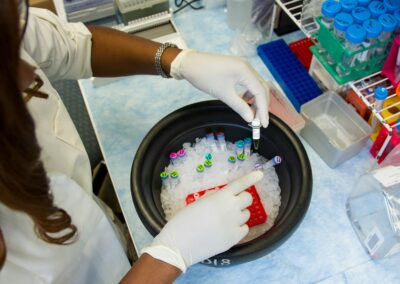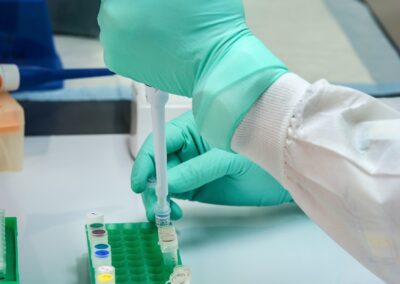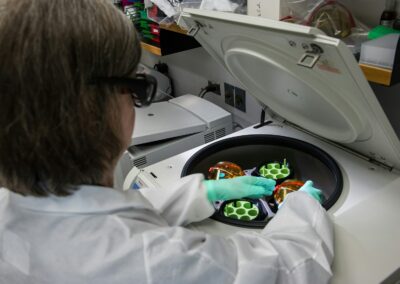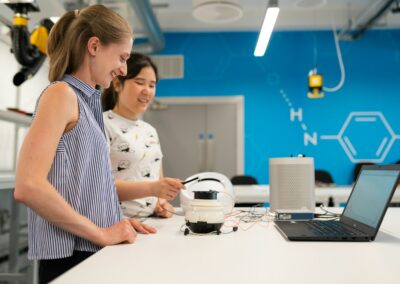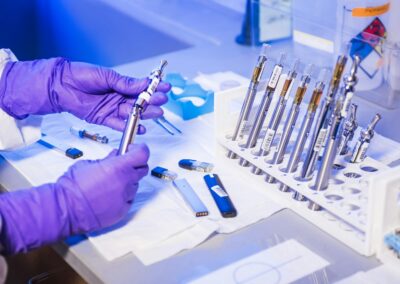Exploring the Potential Long-Term Health Risks of Genetic Augmentation
Introduction to Genetic Augmentation
The field of genetic augmentation is rapidly advancing, promising to revolutionize healthcare by allowing modifications to an individual’s genetic code to enhance physical or cognitive traits. This cutting-edge technology, while holding immense potential, also raises significant concerns about long-term health risks. It is essential to comprehensively understand these risks and develop strategies to monitor and mitigate them effectively.
In regions like Saudi Arabia and the UAE, where technological advancements are a priority, the implications of genetic augmentation are particularly pertinent. Riyadh and Dubai are emerging as global hubs for innovation, investing heavily in modern technologies, including genetic engineering. Understanding and addressing the potential long-term health risks associated with genetic augmentation is crucial for ensuring the well-being of the population and fostering trust in these advancements.
Potential Health Risks of Genetic Augmentation
The primary concern with genetic augmentation is the potential for unintended genetic mutations. While the technology aims to target specific genes to enhance desirable traits, there is a risk of off-target effects, where unintended genes are altered. These unintended modifications can lead to unforeseen health issues, including the development of new diseases or the exacerbation of existing conditions. Continuous research and monitoring are required to understand the full extent of these risks.
Another significant health risk is the potential for genetic augmentation to cause long-term physiological changes that may not be immediately apparent. For example, enhancing certain physical traits could inadvertently affect the body’s natural balance, leading to chronic health problems. Continuous health monitoring and long-term studies are essential to identify and mitigate these risks, ensuring that genetic augmentation does not compromise an individual’s overall health.
Furthermore, there are ethical concerns related to genetic augmentation, particularly regarding its impact on future generations. Genetic modifications made to an individual’s DNA can be passed on to their offspring, potentially leading to unintended consequences for future generations. This underscores the importance of thorough ethical considerations and rigorous long-term studies to ensure that genetic augmentation is used responsibly and safely.
Case Studies and Current Research
Several case studies highlight the potential long-term health risks of genetic augmentation. For instance, early trials of gene editing in humans have shown promising results, but they have also revealed unexpected complications. In some cases, individuals experienced immune reactions or other health issues that were not predicted during the initial phases of research. These findings emphasize the need for ongoing research and monitoring to understand the full scope of genetic augmentation’s impact on health.
In Saudi Arabia, researchers at King Abdullah University of Science and Technology (KAUST) are at the forefront of genetic research, exploring both the potential benefits and risks of genetic augmentation. Their work includes long-term studies to monitor the health outcomes of individuals who have undergone genetic modifications. By collaborating with international experts, KAUST aims to develop robust guidelines for the safe and ethical use of genetic augmentation technologies.
Similarly, the UAE has established several research initiatives focused on genetic engineering and its implications for public health. The Dubai Future Foundation, for example, is investing in research to understand the long-term effects of genetic augmentation and to develop strategies for monitoring and mitigating potential risks. These efforts highlight the commitment of both Saudi Arabia and the UAE to advancing genetic technologies while prioritizing public health and safety.
Monitoring and Mitigating Long-Term Health Risks
Strategies for Monitoring Health Risks
Effective monitoring of the long-term health risks associated with genetic augmentation requires a multi-faceted approach. Firstly, establishing comprehensive health registries to track the health outcomes of individuals who have undergone genetic modifications is essential. These registries can provide valuable data for identifying potential health issues and developing targeted interventions.
In addition to health registries, leveraging advanced technologies such as artificial intelligence (AI) and blockchain can enhance monitoring efforts. AI can analyze vast amounts of health data to identify patterns and predict potential health risks, while blockchain technology can ensure the secure and transparent tracking of genetic modifications and health outcomes. By integrating these technologies, healthcare providers can develop more effective strategies for monitoring and mitigating long-term health risks.
Moreover, continuous collaboration between researchers, healthcare providers, and policymakers is crucial for effective monitoring. By sharing data and insights, stakeholders can develop a comprehensive understanding of the health risks associated with genetic augmentation and implement strategies to address them proactively. In regions like Riyadh and Dubai, fostering such collaborations can enhance the capacity to monitor and manage the health implications of genetic technologies.
Ethical Considerations and Public Engagement
Addressing the long-term health risks of genetic augmentation also requires thorough ethical considerations and active public engagement. It is essential to ensure that genetic modifications are conducted responsibly, with a focus on minimizing potential risks to individuals and future generations. This involves developing robust ethical guidelines and regulatory frameworks that prioritize safety and transparency.
Public engagement plays a critical role in shaping the ethical discourse on genetic augmentation. By involving the public in discussions about the potential risks and benefits of genetic technologies, policymakers can ensure that regulations reflect societal values and concerns. Involving diverse stakeholders, including ethicists, scientists, and community members, can help create a balanced and inclusive approach to genetic augmentation.
In Saudi Arabia and the UAE, public engagement initiatives can help build trust and acceptance of genetic technologies. By providing accurate information and creating platforms for dialogue, governments can foster a more informed and engaged public. This approach can help address ethical concerns and ensure that genetic augmentation is used in a way that benefits society while minimizing potential risks.
Conclusion
The long-term health risks of genetic augmentation are a critical consideration in the development and implementation of this transformative technology. By understanding and addressing these risks, regions like Saudi Arabia and the UAE can ensure that genetic augmentation contributes to public health and well-being. Through continuous monitoring, ethical considerations, and active public engagement, societies can navigate the complexities of genetic augmentation and harness its potential responsibly.
In conclusion, while genetic augmentation holds immense promise, it is essential to prioritize the understanding and management of its long-term health risks. By adopting a proactive and collaborative approach, stakeholders can ensure that genetic augmentation is used safely and ethically, benefiting individuals and society as a whole.
#GeneticAugmentation #HealthRisks #Biotechnology #SaudiArabia #UAE #Riyadh #Dubai #ArtificialIntelligence #ModernTechnology #Leadership


